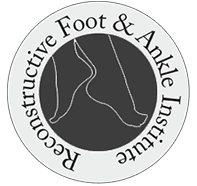Shockwave Therapy for Heel Pain

What is ESWT Shockwave Therapy?
ESWT is a new procedure used to treat chronic heel pain (plantar fasciitis or heel spur syndrome). “Extracorporeal” means “outside the body”, and refers to this non-invasive surgical procedure in which strong sound waves are directed at the area of pain. The device used is similar to devices used in non-surgical treatment of kidney stones.

Dr. Michaels Says:
After thousands of daily steps over decades, the plantar fascia can sometimes say, “I’ve had enough,” Dr. Michaels said. “You can get plantar fasciitis from running off a bus,” Micahels said. “When you land on the front part of your foot, your heel is in the air and you’re asking the plantar fascia, for a split second, to bear the whole brunt of your body’s weight.”
What happens during ESWT?

Your doctor will ask you to quit taking anti-inflammatory medication approximately three days prior the procedure. The treatment takes approximately 30 minutes and is performed with minimal anesthesia. Sound waves penetrate the heel area and stimulate a healing response by the body. It is an outpatient procedure and does not require an overnight stay in the hospital.
Who should not be treated with ESWT?
ESWT is not appropriate for patients who have a bleeding disorder or who are taking medications that may prolong bleeding or interfere with blood clotting. It should not be used during pregnancy. In addition, its safety and effectiveness have not been established for those with nerve damage, severe peripheral vascular disease, metabolic disorders, and infections.
What happens after treatment?
There may be some mild pain or numbness and tingling after the treatment. Patients should be able to return to normal daily activities the following day with modified or light duties (no heavy exercise). Activities to avoid for the 4 to 6 weeks after the procedure include taking anti-inflammatory medications, heavy lifting of objects, running, aerobic classes, sporting activities.
As with any procedure, complications may arise. Complications were reported in less than 1% of the cases during the FDA clinical trials of ESWT. The most common reported complications were bruising of the skin, swelling, pain, and/or numbness or tingling. These conditions usually resolve on their own within a few days following the procedure.
ESWT may not be covered by your insurance but we can find out and let you know if this treatment is an option for you.

